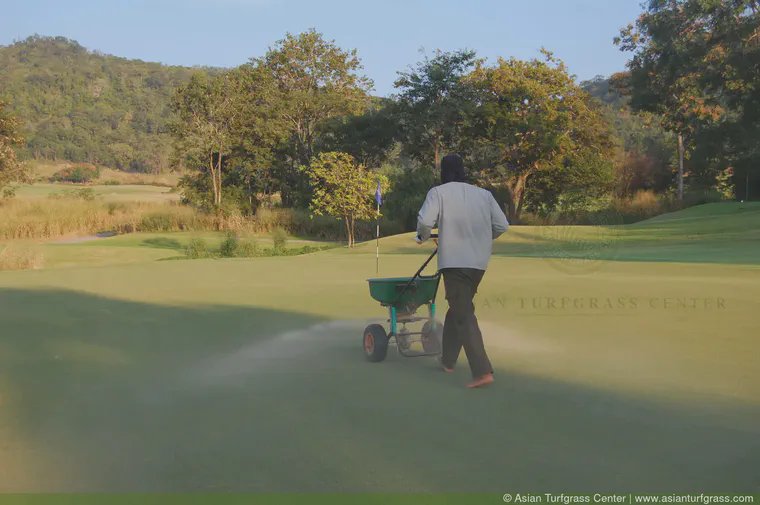I was surprised to read this about nitrogen, coring, and sand topdressing
I bought a new book last year in January and got my hands on it in December. It’s the Compendium of Turfgrass Diseases, Fourth Edition, published by APS Press in 2023. Shipping to Thailand through the APS store was going to be more than $100, so I had it shipped to a relative in the USA. And on a December trip to North America, I collected the book.
After bringing it to my office in Thailand, I took off the wrapper and flipped open the book, I happened to turn to the Pythium Root Dysfunction chapter. The book is well-organized, with each disease having its own chapter, and each chapter (or each disease) arranged with information provided under these headings:
- symptoms and signs
- causal agents
- disease cycle
- epidemiology
- management
- selected references
I looked under the management heading for pythium root dysfunction and read this:
Creeping bentgrass should be fertilized with 4–6 lb of nitrogen per 1,000 ft2 (195–292 kg/ha) annually … Frequent cultivation and topdressing are needed … In general, 15–20% of the putting green surface area should be impacted by hollow-tine aerification annually, and 5,000 lb (2,272 kg) of topdressing [sand] should be applied per 1,000 ft2 (93 m2) each year.
I was surprised to read that in a book published in 2023. Instead of trying to apply those amounts of N, hollow-tine aerification, and sand topdressing, my advice is to measure playing conditions, then adjust the growth of the grass (including the N rate) and the surface and soil management (including sand topdressing) as necessary to maximize the number of days in the year with playing conditions at the desired level.

The idea is to find site-specific growth rates and sand topdressing rates, and these rates can be a lot lower than what the book says. The question, of course, is whether that alternative method works. Basically, should a turf manager listen to the books, or listen to me?
Now for a bit of backstory
Chris Tritabaugh wrote about this in a Substack post with the title “At what point can we say ’this works!’”
He’s been applying N at about 25% of that recommended rate (from the book) and sand at about 25% of that recommended rate from the book, and has not been doing biweekly solid-tine aeration during the summer to increase root survival (the book also recommended that). After doing this for multiple years, he knows that it works.
Chris and I discussed a conversation about whether this works, or not, right at the start of this ATC Office Hours episode. We’d had a conversation with John Kaminski about not doing regular sand topdressing and not disturbing a bentgrass putting green surface with hollow-tine or solid-tine (venting) during the season.
Joe Gulotti asked John about that conversation right at the start of this Talking Greenkeeper episode.
Then the topic came up again when Joe and I discussed it on another episode of the The Talking Greenkeeper, specifically starting at the 44:30 time in this episode.
The point for me is that it seems that frequent disruption, and a lot more sand and surface disruption than Chris is doing, remain the standard. Reading about that in a book published in 2023 confirms to me that yes, those types of recommendations are the standard.